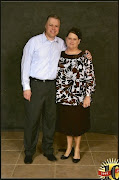“The Great City”
An important rule to remember is that the Bible is the best interpreter of Scripture.
Ø At the end of chapter 17, the interpreting angel tells John the identity of the adulterous woman explicitly: “The woman whom you saw is the great city which has dominion over the kings of the earth” This phrase “the great city” seems to be set forth with the assumption that the reader knows what city that would be, and the phrase is tossed around several more times in this passage.
o Moreover, the phrase appears to be used quite exclusively in the book of Revelation. Outside of this passage, in which it occurs many times, all of which clearly refer to Babylon, the phrase only appears twice in the rest of this twenty-two-chapter book.
Ø The first, and most important occurrence of the designation “the great city” is in 11:8, which reads, “And [the two witnesses’] bodies will lie in the street of the great city which is spiritually called Sodom and Egypt, where also their Lord was crucified”
o First, it is all but indisputable that “the great city” as identified here is Jerusalem, “where also their Lord was crucified.”
o Secondly, the writer also sets a precedent for using metaphorical names for Jerusalem, specifically names of Israel’s ancient enemies. This tells us two things: we should not be surprised if he does it again, and Jerusalem is being painted in a very negative light in Revelation.
o A similar occurrence of the phrase “the great city” is found in 16:19, where again we have a vital clue to the identity of the harlot who appears later.
o The verse reads, “And the great city was split into three parts, and the cities of the nations fell”
o As several commentators have recognized, the splitting of the city into three parts seems to echo Ezek 5:1–5 in which God has the prophet divide his hair into three parts as a depiction of coming judgment upon a city, specifically, the desolation of Jerusalem, which will occur in thirds.
o Taking together the precedent of Rev 11:8, the contrast with the cities of the nations/Gentiles, and the background of Ezek 5, we have very compelling reasons to think 16:9, like 11:8, may be referring to Jerusalem as “the great city.”
Ø If Jerusalem is not the harlot, it is worth asking at this point why John, who uses the phrase “the great city” so colorfully in chapters 17 and 18 has been so uncareful as to let it slip at two other places in the book, both of which would likely lead one to see Jerusalem as God’s enemy, if not Babylon itself
From looking at these Scripture, it is my understanding that this is referring to an Apostate Religious, Economic, Political system that has existed since before Jesus was on earth. They were His most vociferous opponents. It does not refer to those orthodox Jews who live by the Word of God and practice its precepts daily. They are the one's who are looking for Messiah!
Hear what the Apostle Paul wrote in Romans 9.
Romans 9:6-8 (NIV)
6 It is not as though God’s word had failed. For not all who are descended from Israel are Israel.
7 Nor because they are his descendants are they all Abraham’s children. On the contrary, “It is through Isaac that your offspring will be reckoned.”
8 In other words, it is not the natural children who are God’s children, but it is the children of the promise who are regarded as Abraham’s offspring.
[1]
[1] The Holy Bible : New International Version. electronic ed. Grand Rapids : Zondervan, 1996, c1984





No comments:
Post a Comment